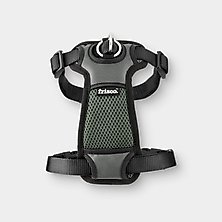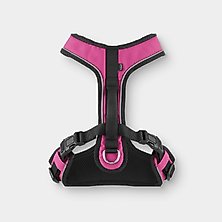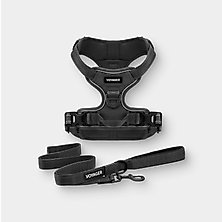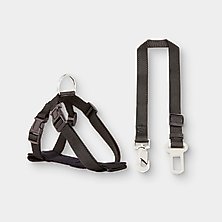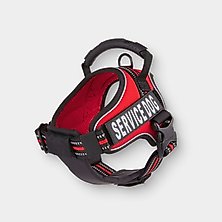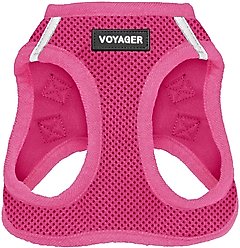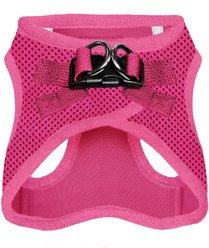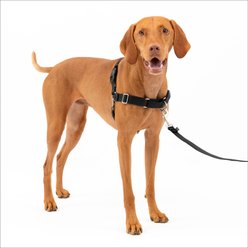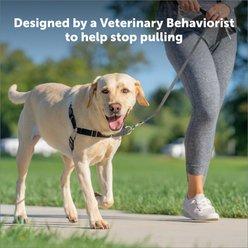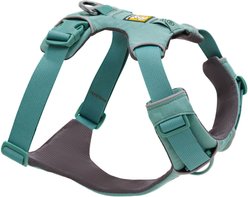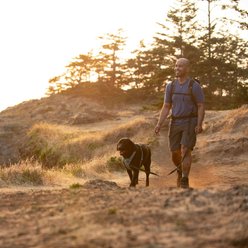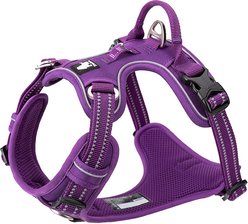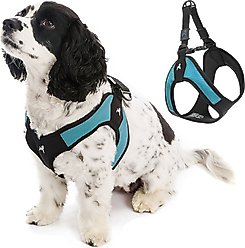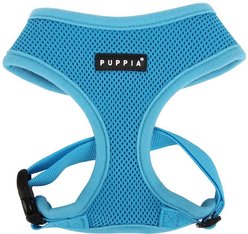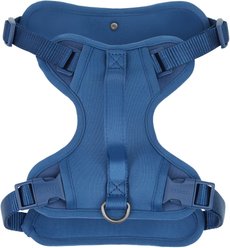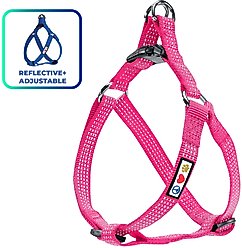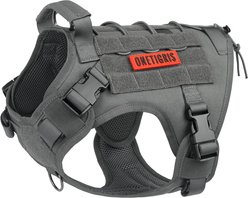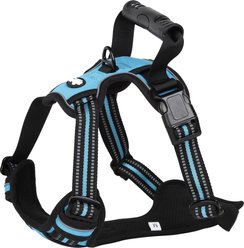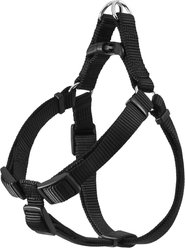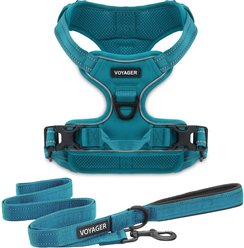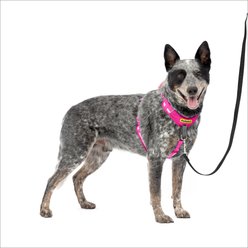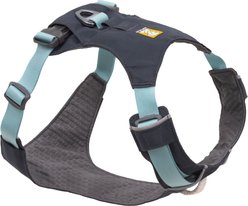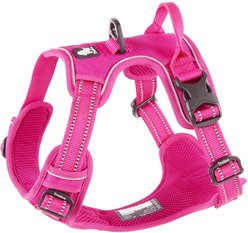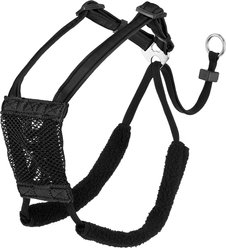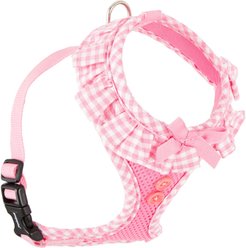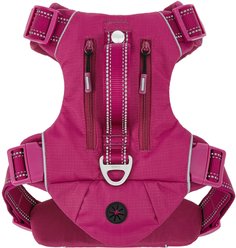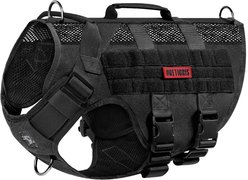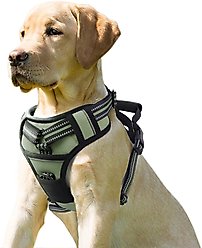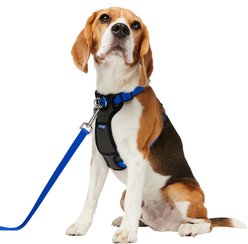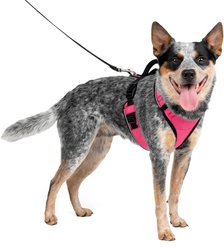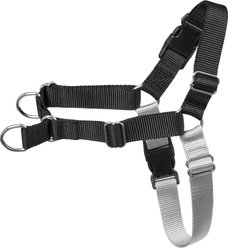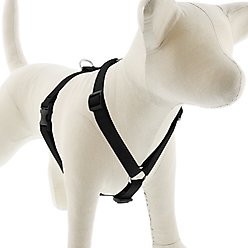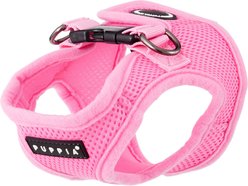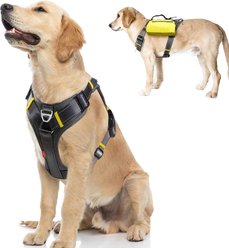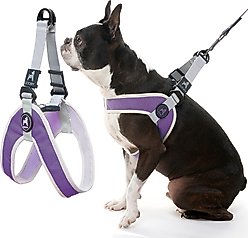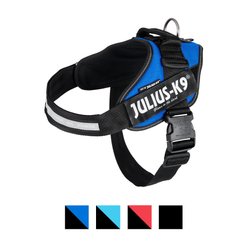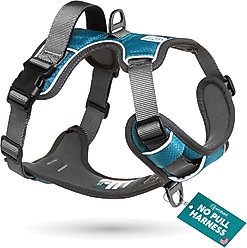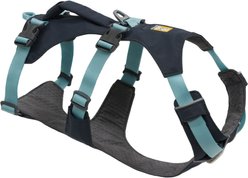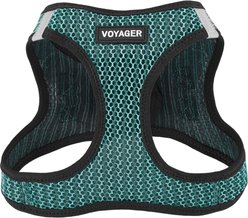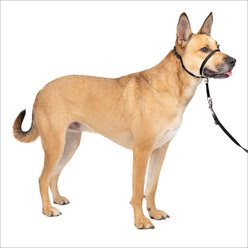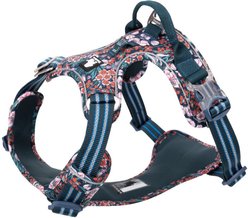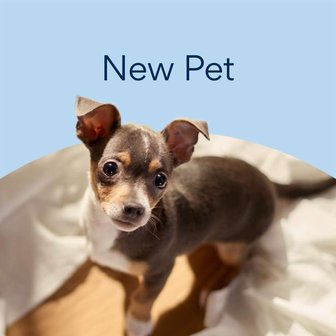1 - 36 of 705 Results
1 - 36 of 705 Results
Dog Harnesses
A well-fitted dog harness can make walks more enjoyable for both you and your pup. Whether you're training a new puppy, managing a strong puller, or just seeking better control, the right harness offers comfort, security, and style. With various designs and materials available, there's a perfect harness for every dog's needs. Types of dog harnesses to consider:
- Back-clip harnesses: Ideal for calm dogs; leash attaches on the back for casual walks
- Front-clip harnesses: Help discourage pulling by redirecting your dog's movement
- Dual-clip harnesses: Offer versatility with both front and back leash attachment points
- Step-in harnesses: Easy to put on; your dog steps into the harness before it's secured
- Over-the-head harnesses: Slide over the dog's head and buckle around the torso
- No-pull harnesses: Designed to minimize pulling behavior during walks
- Car safety harnesses: Keep your dog secure during car rides
- Tactical harnesses: Durable and often used for working or service dogs
- Weighted harnesses: Used for strength training or anxiety relief; consult a vet before use
Choosing the right harness depends on your dog's size, behavior, and activity level. Ensure a proper fit by measuring your dog's chest and neck, and always consult sizing guides. A comfortable, well-fitted harness can enhance your dog's safety and keep you at ease during every adventure.
Frequently Asked Questions about Dog Harnesses
What are the different types of dog harness?
Dog harnesses come in various styles, including back-clip, front-clip, dual-clip, step-in, over-the-head, no-pull, car safety, tactical, and weighted harnesses. Each serves different purposes, from everyday walks to specialized training.
What is the best material for a dog harness?
The best material depends on your dog's needs. Nylon is durable and lightweight; padded polyester offers comfort; mesh provides breathability; and leather adds a classic look but may require more maintenance.
How do I know what size harness my dog needs?
Measure your dog's chest girth (the widest part of the ribcage) and neck circumference. Compare these measurements to the manufacturer's sizing chart to select the appropriate size.
How should a harness fit my dog?
A harness should be snug but not too tight. You should be able to fit two fingers between the harness and your dog's body. Ensure it doesn't chafe or restrict movement.
What kind of harness is most comfortable for dogs?
Comfortable harnesses often feature padded straps, breathable materials, and adjustable fittings. The best choice depends on your dog's size, coat type, and activity level.
What safety features should you look for in a dog harness?
Look for features like reflective stitching for visibility, sturdy buckles, reinforced stitching, and secure leash attachment points. For car travel, consider crash-tested harnesses.
Are weighted harnesses good for dogs?
Weighted harnesses can be beneficial for strength training or anxiety relief but should be used under veterinary guidance to prevent strain or injury.
